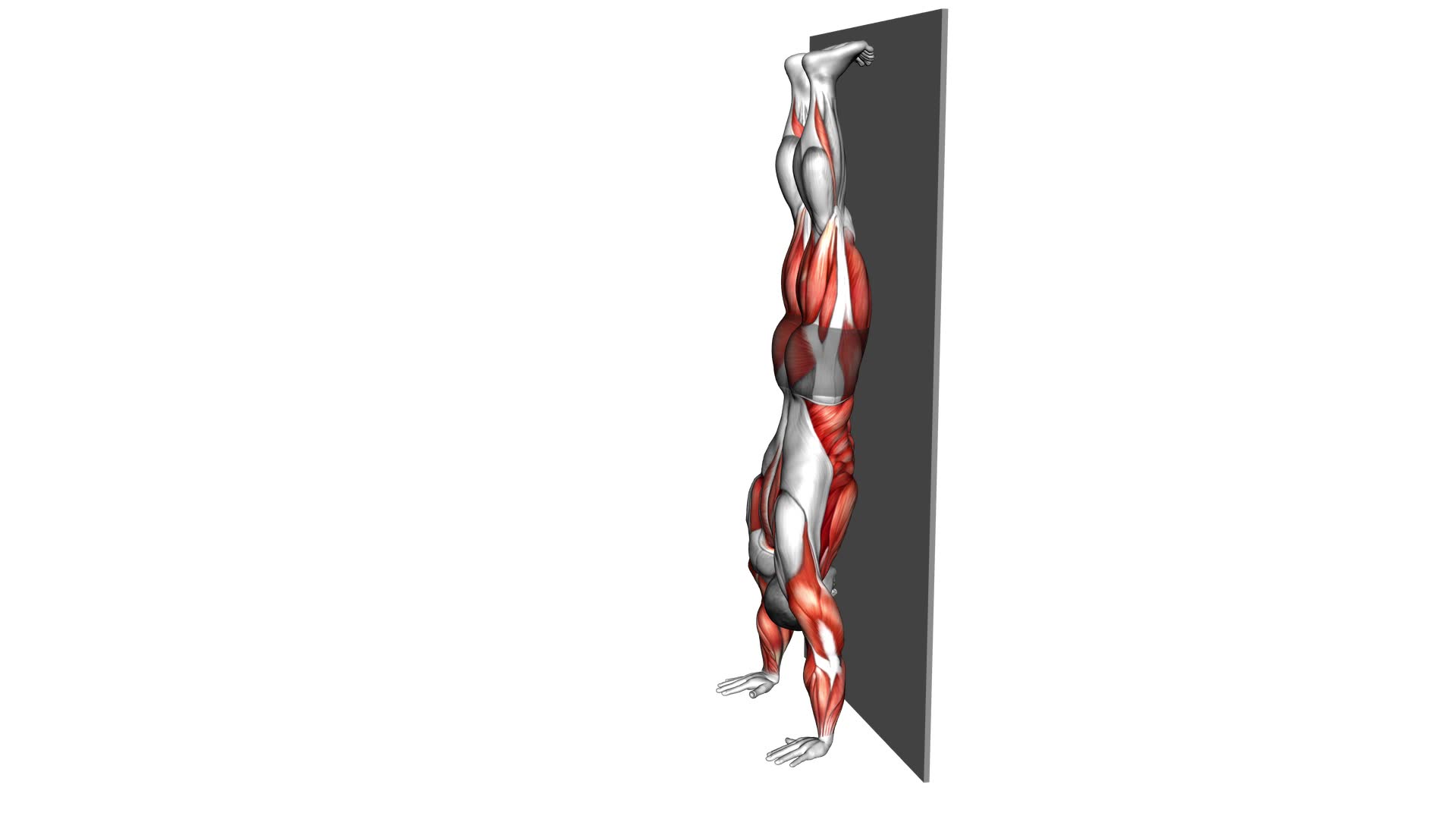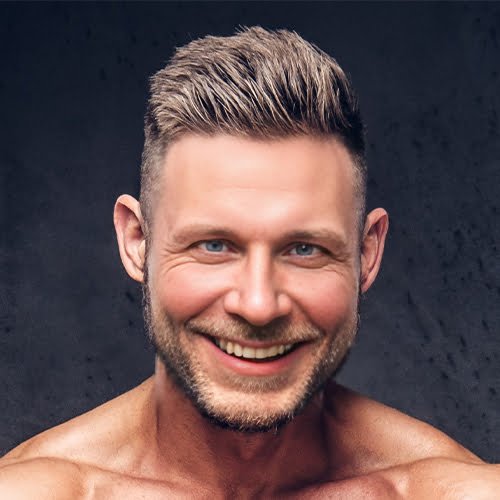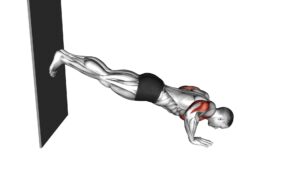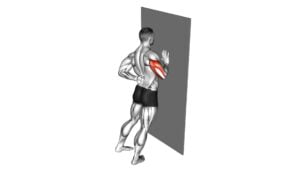Wall Walks – Video Exercise Guide & Tips

Are you looking for a challenging exercise that targets your upper body and core? Look no further than wall walks!
Watch This Exercise Video
This video exercise guide will show you the proper form and technique to get the most out of your wall walks. Whether you're a beginner or an advanced fitness enthusiast, we've got progressions and variations to suit your level.
Avoid common mistakes and achieve success with our helpful tips.
Get ready to take your fitness to new heights with wall walks!
Key Takeaways
- Wall walks help improve upper body strength and engage multiple muscle groups.
- Proper form and technique, such as maintaining a strong plank position and engaging the shoulders and core, are important during wall walks.
- Beginners can start with modified wall walks using an elevated surface and gradually increase the difficulty and distance walked up the wall.
- Advanced variations and challenges, such as one-arm wall walks and handstand wall walks, can push the limits and enhance strength and stability.
Benefits of Wall Walks
To experience the benefits of wall walks, incorporate this exercise into your fitness routine. Wall walks offer a range of advantages for your overall fitness and strength. One of the key benefits is improved upper body strength, as it engages multiple muscle groups including the shoulders, chest, triceps, and core. By performing wall walks regularly, you can strengthen these muscles, leading to better posture and stability.
Another benefit of wall walks is increased shoulder mobility. As you walk your hands up the wall, your shoulders are forced to move through a greater range of motion. This can help to improve your flexibility and prevent injuries.
Additionally, wall walks are a great exercise for building core strength. As you walk your hands up the wall, your core muscles are engaged to stabilize your body. This helps to develop a strong and stable core, which is essential for overall strength and balance.
Incorporating proper form and technique is crucial when performing wall walks. By maintaining a neutral spine, engaging your core, and keeping your shoulders stable, you can maximize the benefits of this exercise. Proper form will also help to prevent any strain or injury.
Proper Form and Technique
To ensure optimal results and prevent injuries, it's important to maintain proper form and technique while performing wall walks. Here are some key tips to help you master the correct form and technique:
- Maintain a strong plank position: Start in a high plank position with your hands on the ground and your feet against the wall. Keep your core engaged, back flat, and hips in line with your shoulders.
- Engage your shoulders and core: As you walk your hands up the wall, focus on engaging your shoulders by pushing through your palms and keeping your elbows slightly bent. Simultaneously, engage your core to stabilize your body.
- *Progressions for beginners:*
- Start with modified wall walks by placing your hands on an elevated surface, such as a bench or step, to reduce the angle and intensity.
- If you find it challenging to walk your hands up the wall, practice holding a high plank position and gradually increase the duration over time.
Progressions for Beginners
To progress as a beginner, start by incorporating modified wall walks using an elevated surface to reduce the intensity and angle. These progression modifications are perfect for beginners who are just starting out or those who may not have the strength or flexibility to perform a full wall walk yet. By using an elevated surface, such as a bench or step, you can decrease the difficulty of the exercise while still reaping the benefits.
Beginner modifications for wall walks also include starting with shorter walks or performing partial wall walks. Instead of walking all the way up to a fully vertical position, you can walk up halfway and then walk back down. This allows you to gradually build strength and stability in your upper body and core muscles. As you become more comfortable and stronger, you can increase the distance you walk up the wall.
Advanced Variations and Challenges
As you continue to progress in your wall walk journey, you can challenge yourself with advanced variations and exercises that will further enhance your strength and stability.
Here are some advanced modifications and balance challenges to take your wall walks to the next level:
- One-Arm Wall Walks: Instead of using both arms to walk up and down the wall, try using only one arm. This will increase the demand on your upper body strength and core stability.
- Handstand Wall Walks: Once you feel comfortable with regular wall walks, you can progress to handstand wall walks. Begin in a handstand position facing away from the wall, then walk your hands towards the wall until you're in a fully extended handstand. Reverse the movement to return to the starting position.
- Wall Walk with Shoulder Taps: As you walk up and down the wall, challenge your balance and stability by tapping one hand to the opposite shoulder. This will require greater core engagement and control.
- Wall Walk with Leg Lifts: Incorporate leg lifts into your wall walks by raising one leg off the wall as you walk up and down. This will increase the demand on your hip stability and balance.
These advanced variations and challenges will push your limits and help you achieve new levels of strength and stability during your wall walk workouts.
Remember to always prioritize proper form and technique to prevent injury and maximize your results.
Common Mistakes to Avoid
When performing wall walks, it's important to be mindful of your hand placement. Incorrect hand placement can put unnecessary strain on your wrists and shoulders.
Additionally, make sure to engage your core throughout the exercise to maintain stability and control.
Lastly, be careful not to overarching your lower back, as this can lead to discomfort and potential injury.
Stay aware of these common mistakes and focus on maintaining proper form for a safe and effective wall walk workout.
Incorrect Hand Placement
Avoiding incorrect hand placement is crucial when performing wall walks to ensure proper form and prevent injury. Here are some hand placement mistakes to avoid and tips for correct hand position:
- Placing your hands too close together can put excessive strain on your wrists. Keep your hands shoulder-width apart to distribute the weight evenly.
- Avoid placing your hands too far away from the wall. This can compromise your balance and stability. Position your hands about arm's length away from the wall.
By avoiding these hand placement mistakes, you can maintain proper form and reduce the risk of injury during wall walks.
Now let's transition into the next section and discuss the importance of engaging your core muscles for optimal performance.
Lack of Core Engagement
To maintain proper form and prevent injury during wall walks, it's essential to engage your core muscles effectively. Core activation is crucial for stability and control throughout the exercise.
One common mistake is the lack of core engagement, which can lead to poor form and potential strain on the lower back. To avoid this, focus on contracting your abdominal muscles as you perform the wall walk. Imagine pulling your belly button towards your spine to activate your deep core muscles.
Additionally, incorporating specific strengthening exercises such as planks, Russian twists, and dead bugs into your routine can help improve core stability and overall performance during wall walks.
Overarching the Lower Back
To prevent overarching your lower back during wall walks, ensure that you maintain a neutral spine position throughout the exercise. This is crucial for avoiding strain and injury. Here are some key points to keep in mind:
- Engage your core: Activating your core muscles helps support your lower back and maintain proper alignment.
- Stretch before and after: Incorporating stretching exercises for your lower back can help improve flexibility and prevent tightness that may contribute to overarching. Try exercises like cat-cow stretch, child's pose, and seated forward fold.
- Strengthen your core: Building a strong core can help improve stability and prevent overarching. Incorporate exercises like planks, deadlifts, and bird dogs into your routine.
Tips for a Successful Wall Walk Routine
To have a successful wall walk routine, it's important to focus on proper body alignment. Keep your body straight and engage your core muscles throughout the movement.
Additionally, pay attention to your breathing, taking deep breaths to help maintain stability and control.
Proper Body Alignment
Achieve proper body alignment by engaging your core and maintaining a neutral spine during your wall walk routine. This is crucial for improving balance and increasing upper body strength. Here are some tips to help you achieve proper body alignment:
- Engage your core: By contracting your abdominal muscles, you stabilize your body and maintain a strong, stable position during the exercise.
- Maintain a neutral spine: Avoid arching your back or letting it sag. Keep your spine in a straight line from your head to your tailbone.
By focusing on these two key elements, you'll ensure that your body is properly aligned throughout the wall walk routine, allowing you to maximize the benefits of the exercise.
Now, let's move on to some tips on how to engage your core effectively.
Core Engagement Tips
Maintain a strong and stable core throughout your wall walk routine to optimize your performance and reap the benefits of this exercise. Core engagement is crucial for proper body alignment and building core strength.
To activate your core during wall walks, start by engaging your abdominal muscles and drawing your belly button towards your spine. This will help to stabilize your torso and maintain a neutral spine position.
As you walk your hands up the wall, focus on keeping your core tight and engaged, avoiding any excessive arching or sagging in your lower back. By actively engaging your core, you'll enhance your balance, stability, and overall strength during the wall walk exercise.
Remember to breathe continuously and evenly throughout the routine, allowing your core muscles to work efficiently.
Breathing Techniques During
As you perform wall walks, it's important to focus on your breathing technique. Proper breathing exercises can enhance your performance and ensure a successful wall walk routine.
Here are some tips to help you master your breathing during wall walks:
- Diaphragmatic breathing:
Engage your diaphragm by breathing deeply into your abdomen.
Exhale fully to release tension and allow for a deeper inhale.
- Controlled breathing:
Coordinate your breath with each movement.
Inhale as you walk up the wall, and exhale as you walk down.
Frequently Asked Questions
Can Wall Walks Help Improve Core Strength?
Yes, wall walks can definitely help improve your core strength. When compared to plank exercises, wall walks engage your core muscles in a different way. By walking your hands up the wall, you challenge your abs, obliques, and lower back to stabilize your body.
This not only strengthens your core, but also improves your overall fitness. So, if you're looking to add variety to your core workouts, wall walks are a great option to consider.
Are Wall Walks Suitable for Individuals With Shoulder Injuries?
If you have a shoulder injury, it's important to consider whether wall walks are suitable for your shoulder rehabilitation.
While wall walks can be a great exercise for building upper body strength, they may put too much strain on your injured shoulder.
It's best to consult with a healthcare professional or physical therapist who can provide guidance on alternative exercises that can still target your core and upper body without exacerbating your shoulder injury.
How Many Sets and Reps Should I Do When Incorporating Wall Walks Into My Workout Routine?
To determine the number of sets and reps for incorporating wall walks into your workout routine, consider your fitness level and goals. Start with 2-3 sets of 5-8 reps and gradually increase as you get stronger.
Wall walks offer suitable modifications for individuals with shoulder injuries, as they can be modified to decrease the load on the shoulder joint.
They provide benefits for overall body strength by engaging the upper body, core, and legs.
Can Wall Walks Be Modified for Individuals With Limited Upper Body Strength?
If you have limited upper body strength, there are modifications you can make to wall walks. Instead of walking all the way up the wall, you can start by just practicing the handstand position against the wall. This will help you build strength and stability in your upper body.
Additionally, there are alternative exercises you can try, such as modified push-ups or shoulder presses, that will target the same muscles as wall walks.
It's important to listen to your body and start at a level that's appropriate for your fitness level.
Are There Any Specific Warm-Up Exercises Recommended Before Attempting Wall Walks?
Before attempting wall walks, it's crucial to warm up your body properly.
Start with dynamic stretches to increase blood flow and flexibility in your muscles. Incorporate movements like arm circles, leg swings, and trunk rotations.
Additionally, perform mobility exercises to prepare your shoulders and core for the wall walks. Focus on exercises that target shoulder stability and range of motion.
Proper warm-up will help prevent injuries and ensure a safe and effective wall walk workout.
Conclusion
In conclusion, wall walks are a highly effective exercise that can provide numerous benefits. These include improved upper body strength, core stability, and shoulder mobility.
By following proper form and technique, beginners can gradually progress and challenge themselves with advanced variations.
Avoiding common mistakes and incorporating these tips into your routine will ensure a successful wall walk workout.
So go ahead, give wall walks a try and experience the transformative effects on your fitness journey.

Author
Years ago, the spark of my life’s passion ignited in my mind the moment I stepped into the local gym for the first time. The inaugural bead of perspiration, the initial endeavor, the very first surge of endorphins, and a sense of pride that washed over me post-workout marked the beginning of my deep-seated interest in strength sports, fitness, and sports nutrition. This very curiosity blossomed rapidly into a profound fascination, propelling me to earn a Master’s degree in Physical Education from the Academy of Physical Education in Krakow, followed by a Sports Manager diploma from the Jagiellonian University. My journey of growth led me to gain more specialized qualifications, such as being a certified personal trainer with a focus on sports dietetics, a lifeguard, and an instructor for wellness and corrective gymnastics. Theoretical knowledge paired seamlessly with practical experience, reinforcing my belief that the transformation of individuals under my guidance was also a reflection of my personal growth. This belief holds true even today. Each day, I strive to push the boundaries and explore new realms. These realms gently elevate me to greater heights. The unique combination of passion for my field and the continuous quest for growth fuels my drive to break new ground.







